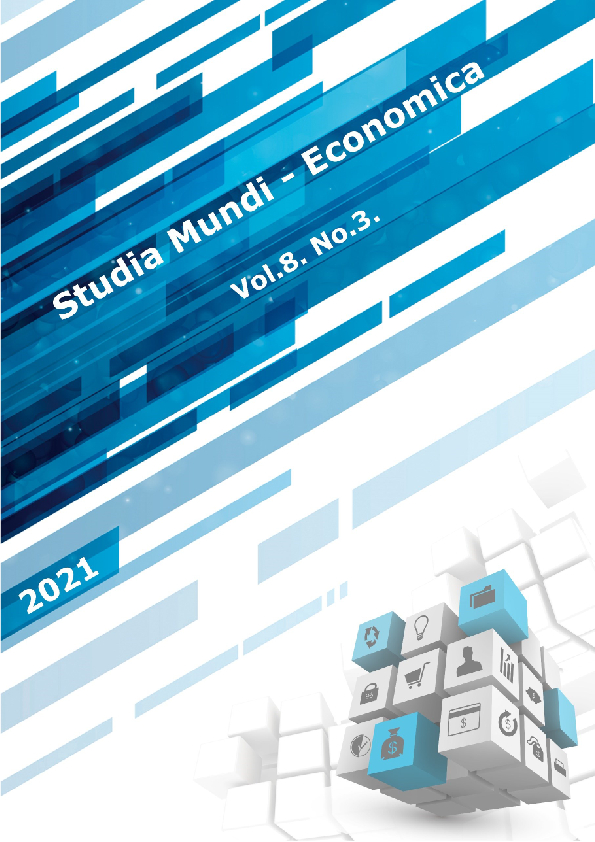Social particuliarities of Kunhegyesi District
DOI:
https://doi.org/10.18531/Studia.Mundi.2021.08.03.72-85Keywords:
társadalmi felzárkózás, hátrányos helyzet, elvándorlás, szociális ellátás, gyermekszegénységAbstract
The Kunhegyesi District is the most disadvantaged district in the Northern Great Plain Region. The aim of this study is to understand the population processes, which serves as a basis for a social comparative analysis of the District’s settlements in the future. Population in the District has been steadily decreasing since 2011 besides lower income levels, poorer health indicators and a higher proportion of premature mortality. Two out of three children are disadvantaged, while the vast majority of young people drops out of secondary school without any qualification. The higher-than-average proportion of Roma population alone does not explain worsening economic output, we are convinced that economic performance has nothing to do with ethnic origin. Reasons are rather to be found in the deterioration of social mobility of the past two decades. Similarly to areas with a higher proportion of Roma population, the District also undergoes an exodus of non-Roma besides a higher fertility rate and earlier desire for child-bearing of the Roma, resulting in ghettoization, thereby further diminishing chances of social mobility. Thanks to social inclusion and recovery programs, as well as the commitment of local Roma stakeholders, promising changes are coming true with an increase in qualification and employment levels and a decrease in the number of disadvantaged children, we wonder whether development is sustainable in the long run, and also, whether the District has a potential to independently self-sustain social development. We’re hopeful to find more answers in further researches.
References
Bukodi, E. – Paskov, M. – Nolan, B. (2017): Intergenerational Class Mobility in Europe: A New Account and an Old Story. INET Oxford Working Papers No. 03., Institute for New Economic Thinking at the Oxford Martin School
Domokos V. (2010): Szegény- és cigánytelepek, városi szegregátumok területi elhelyezkedésének és infrastrukturális állapotának elemzése különböző közoktatási, egészségügyi, településfejlesztési adatforrások egybevetésével, Budapest: ECOTREND Bt.
Dövényi Z. (ed.)(2010): Cadastre of the small regions of Hungary. Budapest: Research Institute of Geography of the Hungarian Academy of Sciences.
Enyedi Gy. – Tamási P. (2001): Szegénység Magyarországon. INFO-Társadalomtudomány 54. pp. 3-6.
Gonda V. J. - Péli L. - Nagyné M. M. (2020): Generációváltás problematikája a tanyasi életformában – fiatalok az élet peremén (a)vagy az ,,elveszett paradicsomban”. Studia Mundi - Economica 7. (4) pp. 47-59. DOI: https://doi.org/10.18531/Studia.Mundi.2020.07.01.26-36
Harcsa I. (2018): Vita, hozzászólás: Módszertani tanulságok a társadalmi percepciók mérése kapcsán. Reflexiók Huszár Ákos és Záhonyi Márta, „A szubjektív mobilitás változása Magyarországon” című írásához. Demográfia 61. (1) pp. 91-98. DOI: https://doi.org/10.21543/Dem.61.1.4
Havasi É. (2001): A szegénység fogalma és mérhetősége. INFO-Társadalomtudomány 54. pp. 7-16.
Huszár Á. – Záhonyi M. (2018): A szubjektív mobilitás változása Magyarországon. Demográfia 61. (1) pp. 5-27. DOI: https://doi.org/10.21543/Dem.61.1.1
Idetartozunk Egyesület (2019): A kezdetek: 2011. Az identitáspolitika. https://idetartozunk.org/kik-vagyunk/
Jedynak W. – Káposzta J. – Kinal J. (Szerk.) (2017): Changes as a social process. Rzeszów: University of Rzeszów
Kiss D. – Lantos Sz. – Marozsán Cs. – Németh N. (2013): Jelenlét – A roma integrációt szolgáló fejlesztések megalapozása, szociális munka kirekesztett közösségekben, szegregátumokban. Budapest: Magyar Máltai Szeretetszolgálat
KSH (2012): A gyermekvállalás társadalmi-gazdasági hátterének területi jellemzői. Budapest: KSH
KSH (2017): Jász-Nagykun-Szolnok megyei évkönyv, 2017. Budapest: KSH
KSH (2010): A születéskor várható élettartam területi különbségei. Statisztikai Tükör IV. (115) https://www.ksh.hu/docs/hun/xftp/stattukor/varhatoelet10.pdf (Letöltve: 2021.02.07.)
Molnár M. – Bogárdi T. (2016): Investigating provincial Hungary: Social Recovery or Recession? pp. 93-104. In: Jedynak, W. - Kinal, J. (Eds.) Society – Modernity – Change: Selected issues from Central Europe. Krakow: University of Rzeszów
Pénzes J. – Tátrai P. – Pásztor I. (2018): A roma népesség területi megoszlásának változása Magyarországon az elmúlt évtizedekben. Területi Statisztika 58. (1) pp. 3-26. DOI: https://doi.org/10.15196/TS580101
Matkovich I. (2011): Népszámlálási kampány romákkal – Fontosabb az eredménynél. Magyar Narancs 42. (10.20.) https://magyarnarancs.hu/belpol/nepszamlalasi_kampany_romakkal_-_fontosabb_az_eredmenynel-77142
MFF (2020): Megyei Felzárkózási Fórum jegyzőkönyvek – informális anyag. Szolnok: Jász-Nagykun-Szolnok Megyei Önkormányzat
NEKIR (2019): Népegészségügyi Elemzési Központ Információs Rendszer. Budapest: Nemzeti Népegészségügyi Központ
Ritter K. (2008): A helyi fejlesztés esélyei – agrárfoglalkoztatási válság és területi egyenlőtlenségek Magyarországon. Területi Statisztika 48. (5) pp. 554-572.
Ritter K. (2014): Possibilities of local economic development (LED) in lagging rural areas. Acta Carolus Robertus 4. (1) pp. 101-108.
Ritter K. (2017): Vidékgazdasági tanulmányok. Gödöllő: Szent István Egyetemi Kiadó
Ritter, K. (2018): Special features and problems of rural society in Hungary. Studia Mundi – Economica (1) pp. 98-112. DOI: https://doi.org/10.18531/Studia.Mundi.2018.05.01.98-112
Jogszabályok:
/2015. (IX. 22.) Korm. határozat a Magyar Nemzeti Társadalmi Felzárkózási Stratégia II. végrehajtásának a 2015-2017. évekre szóló kormányzati intézkedési tervéről
/2014. (XI. 26.) Kormányrendelet A kedvezményezett járások besorolásáról
évi CXC. törvény a nemzeti köznevelésről. 45/(3) 27. A gyermekek, a tanulók kötelességei és jogai, a tankötelezettség
évi XXXI. törvény A gyermekek védelméről és a gyámügyi igazgatásról
Downloads
Published
Issue
Section
License
Copyright (c) 2021 Kárász Katalin, Lipcsei József

This work is licensed under a Creative Commons Attribution-NonCommercial-NoDerivatives 4.0 International License.
A folyóirat Open Access (Gold). Cikkeire a Creative Commons 4.0 standard licenc alábbi típusa vonatkozik: CC-BY-NC-ND-4.0. Ennek értelmében a mű szabadon másolható, terjeszthető, bemutatható és előadható, azonban nem használható fel kereskedelmi célokra (NC), továbbá nem módosítható és nem készíthető belőle átdolgozás, származékos mű (ND). A licenc alapján a szerző vagy a jogosult által meghatározott módon fel kell tüntetni a szerző nevét és a szerzői mű címét (BY).






